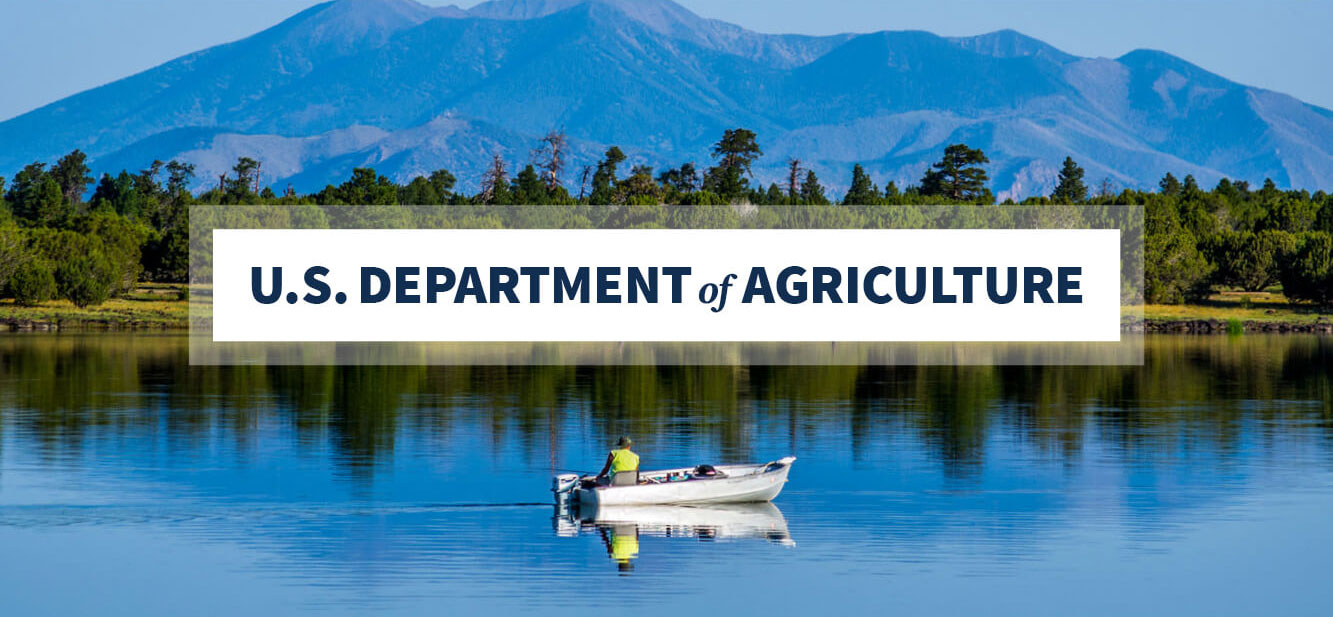Biden-Harris Administration Proposes First-of-its Kind National Forest Plan Amendment to Conserve and Steward Old Growth Forests
Biden-Harris Administration Proposes First-of-its Kind National Forest Plan Amendment to Conserve and Steward Old ... USDA.gov


Action is next step in the Forest Service’s work under President Biden’s Executive Order on Strengthening the Nation’s Forests, Communities, and Local Economies

WASHINGTON, Dec. 19, 2023 – Today, consistent with direction from President Biden in Executive Order 14072 to conserve and restore old and mature forests, the U.S. Department of Agriculture announced a proposal to amend all 128 forest land management plans to conserve and steward old-growth forest conditions on national forests and grasslands nationwide.
Sustainable Development Goals (SDGs) Emphasis:
- Goal 13: Climate Action
- Goal 15: Life on Land
- Goal 17: Partnerships for the Goals
Introduction:
The U.S. Department of Agriculture (USDA) has proposed a nationwide forest plan amendment to conserve and steward old-growth forest conditions on national forests and grasslands across the country. This proposal aligns with President Biden’s Executive Order 14072, which aims to conserve and restore old and mature forests. The amendment will utilize the best available science, including Indigenous Knowledge, to provide consistent direction for old-growth forest conditions.
Benefits of Old-Growth Forests:
- Old-growth forests store large amounts of carbon, contributing to climate resilience (Goal 13).
- They increase biodiversity and support various species (Goal 15).
- Old-growth forests reduce wildfire risks (Goal 13).
- They enable subsistence and cultural uses (Goal 15).
- Old-growth forests provide outdoor recreational opportunities (Goal 15).
- They promote sustainable local economic development (Goal 17).
Agriculture Secretary Tom Vilsack emphasized the importance of conserving old-growth forests, stating that they are vital ecosystems and special cultural resources. He highlighted the need to address new threats posed by climate change, such as historic droughts and catastrophic wildfires. Secretary Vilsack believes that clear direction will help old-growth forests thrive across the shared landscape.
Brenda Mallory, Chair of the White House Council on Environmental Quality, emphasized the role of old-growth forests in absorbing carbon dioxide and their contribution to addressing climate change. She stated that the Biden administration is taking action to conserve and restore old-growth forests as a key climate solution.
Previous Actions:
In June 2022, Secretary Vilsack directed the USDA Forest Service to take action in response to President Biden’s Executive Order on conserving and restoring old and mature forests. The Forest Service conducted the first-ever nationwide inventory of old-growth and mature forests across national forests and grasslands. The inventory report revealed that the Forest Service manages nearly 25 million acres of old growth and over 68 million acres of mature forests. The proposed amendment only applies to lands managed by the USDA Forest Service.
The USDA has also released the Climate Risk Viewer, a tool to assess climate risks and vulnerabilities on national forests and grasslands. Additional actions are forthcoming, including a threat analysis on mature and old-growth forests and a proposed new national policy for monitoring the health of national forests and grasslands. The Forest Service aims to build resilience and ensure future actions align with the significant climate stressors faced by forests.
Proposed Nationwide Forest Plan Amendment:
The proposed amendment aims to provide consistent management direction for old-growth forest conservation and management. It will be developed in partnership with Tribal communities and in collaboration with local stakeholders. The strategies for old-growth forest conservation will be adaptive, considering the unique opportunities and challenges of each area. This approach allows for more flexibility in responding to rapid changes in wildfire behavior, drought, insects, and disease. The amendment prohibits vegetation management within old-growth forest conditions when the primary purpose is economic gain.
Building on Previous Efforts:
Today’s announcement builds on previous efforts to conserve old-growth and mature forests, such as the restoration of roadless protections across nearly 9.4 million acres of the Tongass National Forest in Southeast Alaska. The proposed national plan amendment takes into account public comments on the Forest Service’s Advanced Notice for Proposed Rule Making. It also complements other related efforts, including the Wildfire Crisis Strategy, Reforestation Strategy, and other strategic guidance documents. In Fiscal Year 2023, the Forest Service achieved key milestones in addressing the wildfire crisis, restoring national forests, and supporting rural communities.
Environmental Impact Statement and Public Comments:
The proposal has initiated scoping, and an Environmental Impact Statement will be prepared to evaluate the effects of the national land management plan amendment. The USDA invites public comments on the proposal, which can be submitted via a webform or hard copy letters. The agency values comments received by February 2, 2024.
Webform: www.fs.usda.gov/project/?project=65356
Hard copy letters may be submitted to:
Director, Ecosystem Management Coordination,
201 14th Street SW, Mailstop 1108,
Washington, DC 20250–1124.
Conclusion:
The USDA’s proposed nationwide forest plan amendment demonstrates the agency’s commitment to conserving and stewarding old-growth forest conditions. By aligning with President Biden’s Executive Order and utilizing the best available science, the USDA aims to ensure the thriving of old-growth forests across the nation. These efforts contribute to achieving the Sustainable Development Goals, particularly Goals 13, 15, and 17. The USDA continues to transform America’s food system and invest in rural communities while promoting equity and sustainability.
#
USDA is an equal opportunity provider, employer, and lender.
SDGs, Targets, and Indicators Identified in the Article
| SDGs | Targets | Indicators |
|---|---|---|
| SDG 13: Climate Action | Target 13.1: Strengthen resilience and adaptive capacity to climate-related hazards and natural disasters | Indicator not mentioned in the article |
| SDG 15: Life on Land | Target 15.2: Promote the implementation of sustainable management of all types of forests, halt deforestation, restore degraded forests, and substantially increase afforestation and reforestation globally | Indicator not mentioned in the article |
| SDG 15: Life on Land | Target 15.5: Take urgent and significant action to reduce the degradation of natural habitats, halt the loss of biodiversity, and protect and prevent the extinction of threatened species | Indicator not mentioned in the article |
| SDG 15: Life on Land | Target 15.9: By 2020, integrate ecosystem and biodiversity values into national and local planning, development processes, poverty reduction strategies, and accounts | Indicator not mentioned in the article |
| SDG 15: Life on Land | Target 15.b: Mobilize significant resources from all sources and at all levels to finance sustainable forest management and provide adequate incentives to developing countries to advance such management, including for conservation and reforestation | Indicator not mentioned in the article |
1. Which SDGs are addressed or connected to the issues highlighted in the article?
The issues highlighted in the article are connected to SDG 13: Climate Action and SDG 15: Life on Land.
2. What specific targets under those SDGs can be identified based on the article’s content?
Based on the article’s content, the specific targets that can be identified are:
- Target 13.1: Strengthen resilience and adaptive capacity to climate-related hazards and natural disasters
- Target 15.2: Promote the implementation of sustainable management of all types of forests, halt deforestation, restore degraded forests, and substantially increase afforestation and reforestation globally
- Target 15.5: Take urgent and significant action to reduce the degradation of natural habitats, halt the loss of biodiversity, and protect and prevent the extinction of threatened species
- Target 15.9: By 2020, integrate ecosystem and biodiversity values into national and local planning, development processes, poverty reduction strategies, and accounts
- Target 15.b: Mobilize significant resources from all sources and at all levels to finance sustainable forest management and provide adequate incentives to developing countries to advance such management, including for conservation and reforestation
3. Are there any indicators mentioned or implied in the article that can be used to measure progress towards the identified targets?
No specific indicators are mentioned or implied in the article that can be used to measure progress towards the identified targets.
Behold! This splendid article springs forth from the wellspring of knowledge, shaped by a wondrous proprietary AI technology that delved into a vast ocean of data, illuminating the path towards the Sustainable Development Goals. Remember that all rights are reserved by SDG Investors LLC, empowering us to champion progress together.
Source: usda.gov

Join us, as fellow seekers of change, on a transformative journey at https://sdgtalks.ai/welcome, where you can become a member and actively contribute to shaping a brighter future.







